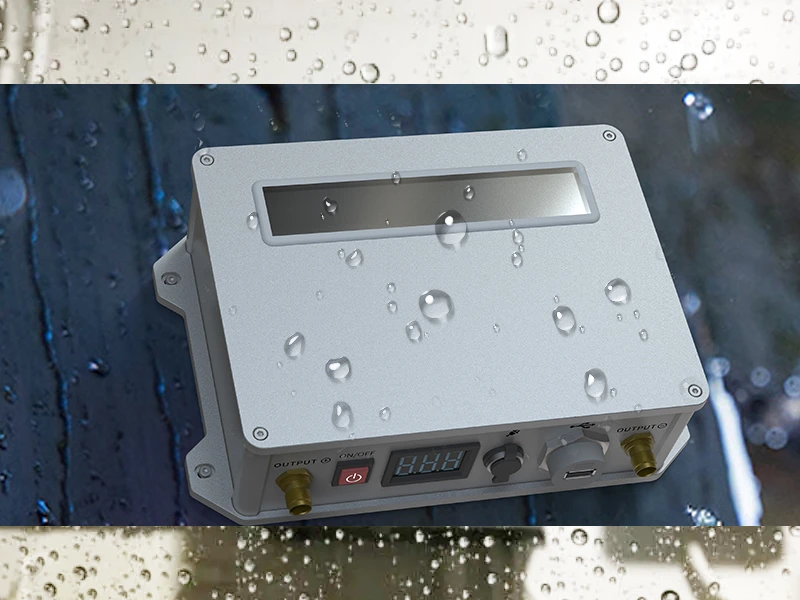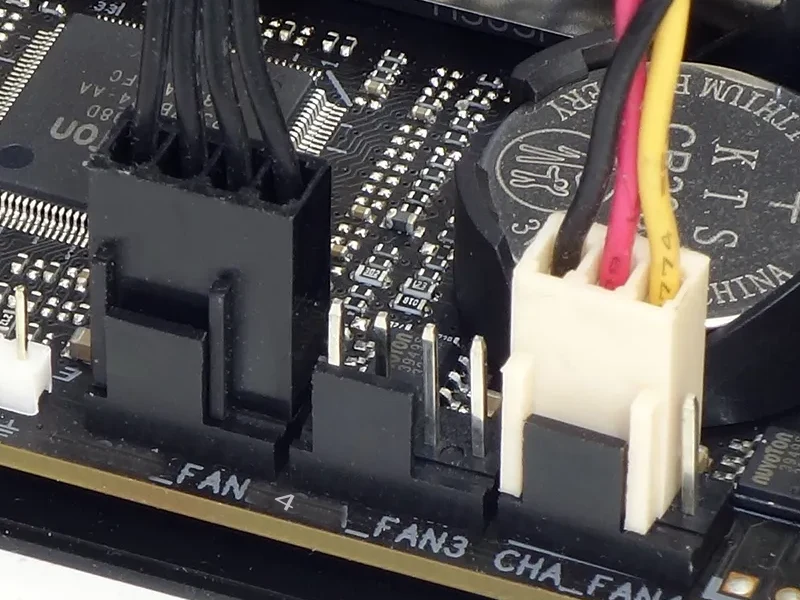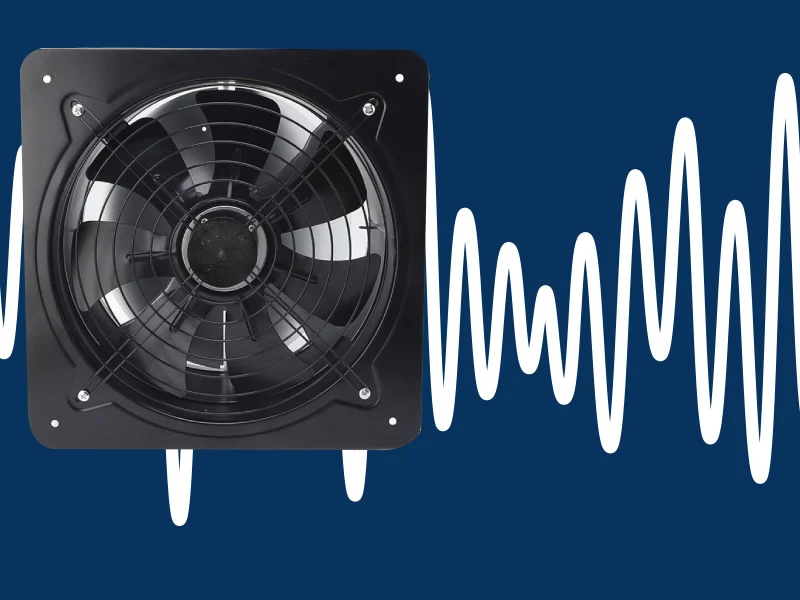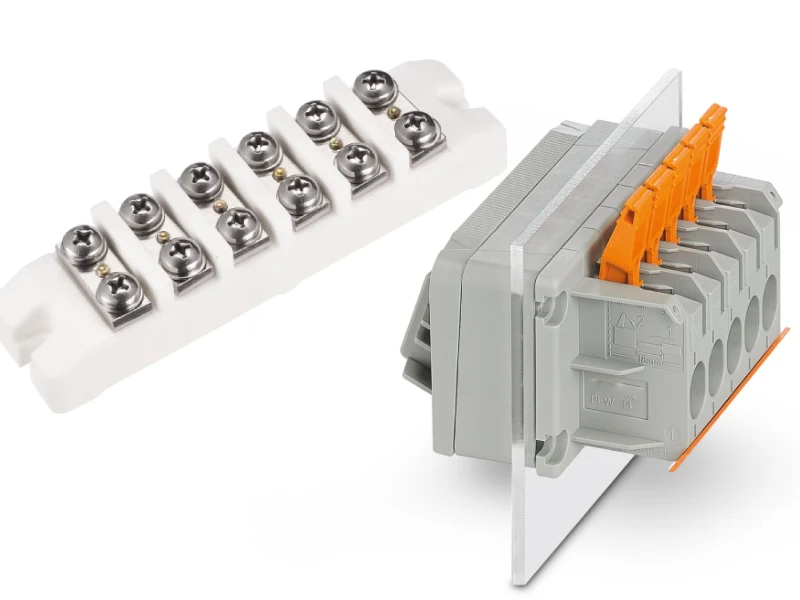You know how frustrating it feels when you open an electrical cabinet and spot droplets inside. Condensation can sneak in, causing rust and short circuits before you even notice. If you let condensation build up, your sensitive equipment faces real trouble. You may see hardware rust, mold growth, and even sudden failures. These problems often cut down the lifespan of your electronics. Reliable climate control is the answer. Using an air conditioner inside your cabinet stops condensation from forming and keeps everything safe. Linkwell gives you trusted cabinet air conditioners and ventilation solutions. Solving Condensation Problems: Electrical Cabinet Air Conditioner means you get peace of mind and longer equipment life.
- Condensation can cause short circuits, leading to unexpected equipment failures.
- Excess moisture can result in rust, which deteriorates hardware components over time.
- High humidity levels may promote mold growth, posing health risks and further damaging equipment.
- These issues collectively reduce the efficiency and operational lifespan of sensitive equipment.
Key Takeaways
- Condensation can lead to rust, mold, and electrical failures, which shorten the lifespan of your equipment.
- Using air conditioners helps control temperature and humidity, preventing condensation from forming inside electrical cabinets.
- Regular maintenance of air conditioning systems is crucial. Clean filters and inspect seals to keep humidity levels in check.
- Implement best practices like stable temperatures, proper sealing, and ventilation to further reduce condensation risks.
- Monitor temperature and humidity inside cabinets to catch potential condensation issues early and protect your equipment.
Why Condensation Happens in Electrical Cabinets

Temperature and Humidity Factors
You might wonder why condensation shows up inside electrical enclosures. The answer often comes down to temperature and humidity. When warm, humid air meets a cold surface, the air can’t hold all its moisture. That moisture turns into droplets, which is condensation. This happens a lot when the temperature inside your cabinet drops below the dew point.
Take a look at the main environmental factors that lead to condensation:
| Environmental Factor | Description |
|---|---|
| Temperature Fluctuation | Warm air holds more moisture. When it touches a cold surface, condensation forms. |
| Environmental Conditions | Places with high humidity or near water have a bigger risk. |
| Rapid Temperature Changes | Quick drops in temperature, like when equipment cools down fast, cause condensation. |
| Lack of Ventilation | Poor airflow traps humid air, making condensation more likely. |
| Equipment Aging | Old seals let moisture in, raising condensation risk. |
| Installation Problems | Bad sealing or misaligned doors let humid air sneak inside. |
| Breathing Effect | Daily air expansion and contraction can pull in humid air, even in well-sealed cabinets. |
You see condensation more often in places with high humidity levels. If you live near the coast or in a humid climate, your electrical enclosures face a bigger challenge. Here’s how temperature and humidity work together:
- Warm, humid air touching a cold surface creates condensation.
- Big temperature differences between inside and outside the enclosure make condensation worse.
- High humidity environments raise the risk, especially when the cabinet is cooler than the dew point.
- Warm air enters a cooler enclosure and loses moisture, causing condensation.
- If the inside is warmer than outside, moisture can condense on cooler surfaces.
- Coastal or humid areas see more condensation because of high humidity levels.
Impact of Air Conditioning Systems
Air conditioning systems play a big role in controlling condensation inside electrical enclosures. When you use an air conditioner, you manage both temperature and humidity. A well-maintained AC keeps humidity between 40% and 50% in summer and 25% to 40% in winter. This range helps prevent moisture buildup.
| Key Point | Explanation |
|---|---|
| Role of AC | Air conditioners control humidity, stopping condensation from forming in electrical cabinets. |
| Humidity Control | Keeping humidity in the right range prevents moisture problems. |
| Maintenance Impact | If you skip AC maintenance, humidity can rise and condensation becomes a problem. |
Tip: Regularly check your air conditioning system. Clean filters and inspect seals to keep humidity under control and stop condensation before it starts.
When you understand how temperature and humidity interact, you can take steps to protect your electrical enclosures. Air conditioning is a powerful tool, but it works best when you keep it in good shape.
Risks of Condensation for Electrical Equipment
Corrosion and Component Damage
Condensation inside your electrical cabinet can cause more trouble than you might think. When water droplets form, they settle on metal parts and start a chain reaction. Rust appears on connectors and terminals, and even non-ferrous materials can oxidize. You may notice sticky switches or stiff moving parts. Over time, these problems get worse and can lead to complete failure.
Here’s a quick look at the most common types of damage caused by condensation:
| Type of Damage | Description |
|---|---|
| Corrosion | Water from condensation leads to rust and weakens materials. |
| Equipment Damage | Moving parts seize up, causing electrical and electronic failures. |
| Enclosure Corrosion | Water buildup can eat away at the cabinet itself, risking its strength and protection. |
You might spot rust on connectors or see signs of previous water exposure. Corrosion doesn’t just affect iron and steel. Moisture can trigger oxidization in other metals, which means even your aluminum wires and interconnects are at risk. This kind of damage often leads to electrical leakage, device instability, and even strange growths like whiskers or dendrites on metal surfaces.
- Moisture-induced corrosion can degrade devices and cause malfunctions.
- High humidity and condensation speed up these chemical reactions.
- You may face higher maintenance costs and shorter equipment lifespans.
Electrical Failures and Safety Issues
Condensation doesn’t stop at corrosion. It can create serious electrical failures and safety hazards. When water droplets touch live components, short circuits happen fast. You might see equipment performance drop or experience sudden shutdowns.
- Corrosion increases resistance, making your devices act unpredictably.
- Short circuiting from condensation can damage sensitive electronics.
- Electrical leakage and material breakdown may lead to fires or safety risks.
If condensation causes a short circuit, your whole system could go offline. Production may halt, and you could face costly repairs. During rainy seasons or in humid climates, regular safety checks help you catch these problems early. Keeping condensation under control protects your team and keeps your operations running smoothly.
Tip: Watch for rust, sticky switches, or sudden shutdowns. These signs often mean condensation is causing trouble inside your cabinet.
Prevent Condensation: Linkwell Cabinet Air Conditioner Solutions

You want to keep your electrical cabinets dry and safe. Solving condensation problems: electrical cabinet air conditioner starts with smart climate control and reliable products. Linkwell offers solutions that help you prevent condensation and protect your equipment from moisture damage.
Climate Control Best Practices
You can stop condensation before it starts by following a few best practices. Stable temperatures and proper sealing make a big difference. Take a look at this table for quick tips:
| Best Practice | Description |
|---|---|
| Avoid Dampness | Use overhangs or shelters to keep dripping water away from your enclosure. |
| Stable Temperatures | Keep internal temperatures steady to reduce condensation risk. |
| Use IP Rated Enclosures | Pick enclosures with IP54, IP65, or higher ratings to block moisture. |
| Implement Sealing Kits | Seal entry points to minimize moisture flow. |
| Ensure Airflow | Use ventilation to keep air moving and reduce moisture buildup. |
| Climate Control Systems | Install heating or cooling systems for better moisture control. |
| Choose Non-Metallic Materials | Non-metallic enclosures help reduce heat exchange and condensation. |
You should always maintain the temperature inside your cabinet above the dew point. When you do this, condensation cannot form. Warm air holds more moisture, but when it touches a cold surface, it releases that moisture as droplets. Keeping surfaces warm enough prevents condensation. Linkwell cabinet air conditioners use inverter technology to maintain consistent cooling, which helps with moisture control and energy savings.
Temperature and Humidity Monitoring
You need to know what’s happening inside your cabinet. Monitoring temperature and humidity helps you prevent condensation and catch problems early. Here’s how you can do it:
- Place temperature sensors inside the enclosure to log data over time.
- Monitor heat buildup during usage to avoid overheating.
- Use enclosure air conditioners for precise temperature control.
- Fans and blowers help with active cooling.
- Air-to-air heat exchangers dissipate heat.
- Assess your temperature control systems to avoid equipment failure.
Linkwell cabinet air conditioners come with advanced digital controls. You can program the system to maintain optimal conditions and monitor humidity in real time. Remote monitoring lets you adjust settings from anywhere, making moisture management easier. These features help you with solving condensation problems: electrical cabinet air conditioner and keep your equipment safe.
Ventilation and Airflow Management
Ventilation is key to preventing condensation. You can use passive or forced-air ventilation to keep air moving and reduce moisture buildup. Here are some strategies:
- Hybrid systems use passive vents for low-load phases and activate fans when temperatures rise.
- Passive systems rely on natural convection, letting hot air rise and escape.
- Install vent grilles and louvers to create a chimney effect, drawing air in from the bottom and out the top.
- Breathable vents allow air and vapor exchange but block water and dust.
- Forced-air ventilation systems use blower fans to circulate air, which is important for large equipment.
Linkwell offers ventilation solutions like fan filter units and cabinet air conditioners. These products help you manage airflow and moisture, especially in high-power or outdoor settings. Solving condensation problems: electrical cabinet air conditioner means using the right mix of ventilation and climate control.
Additional Moisture Protection (Desiccants, Heaters, Sealing)
Sometimes you need extra protection against moisture. You can use desiccants, heaters, and sealing kits to prevent condensation and keep your cabinet dry. Here’s a step-by-step guide:
- Install enclosure heaters, fans, and thermostats to regulate temperature and humidity.
- Add a dehumidifier to absorb moisture when humidity gets too high.
- Use low thermal conductivity materials and proper ventilation to stabilize internal temperatures.
- Place desiccant packets, like silica gel, inside the enclosure. Remember to replace them regularly.
- Seal all entry points with gaskets and sealing kits to block moisture.
- Choose outdoor enclosures with advanced materials, silicone gaskets, and corrosion protection coatings for harsh environments.
Linkwell cabinet air conditioners feature IP54 and IP65 protection ratings. These ratings mean your enclosure can handle water splashes or even low-pressure water jets, keeping moisture out. Take a look at this table:
| Feature | IP54 Enclosure | IP65 Enclosure |
|---|---|---|
| Water Resistance Level | Moderate protection against water splashes | Complete dust protection and withstands water jets |
| Suitable Scenarios | Occasional water exposure | Intense moisture exposure, harsh outdoor conditions |
Inverter technology in Linkwell air conditioners helps you save energy and maintain steady cooling. You get better moisture control and lower costs. Outdoor enclosures with integrated climate control systems use advanced materials and silicone gaskets to keep moisture out and protect sensitive equipment.
You might face challenges like controlling airflow, reducing moisture, and treating surfaces. Proper sealing and regular maintenance help you overcome these issues. Using an anti-condensation unit, dehumidifier, and forced-air ventilation system gives you the best chance to prevent condensation and keep your electrical cabinets safe.
Tip: Regularly check your cabinet for signs of moisture. Replace desiccants, clean filters, and inspect seals to keep condensation away.
Solving condensation problems: electrical cabinet air conditioner is easier when you follow these steps and use Linkwell’s reliable products. You can prevent condensation, extend equipment life, and avoid costly downtime.
Solving Condensation Problems: Electrical Cabinet Air Conditioner Maintenance

Inspection Schedules
You want your electrical cabinets to stay dry and safe. Regular maintenance is the best way to keep condensation away. If you follow a schedule, you can catch issues before they turn into big condensation problems. Here’s a simple routine you can use:
- Check fuses and breakers. Make sure all electrical connections are tight and wires show no signs of corrosion.
- Test refrigerant levels. Look for leaks and replace insulation if needed.
- Clean debris from the cabinet. Wipe down coils and make sure nothing blocks airflow.
- Inspect and lubricate fan motors. Open control boxes and check for damage or dirty contactors.
You should inspect your cabinet every six months. Look for dust, loose wires, or signs of overheating. Clean the filters and check for any wear. Schedule professional maintenance once a year. This helps you spot hidden condensation before it causes trouble.
Tip: Regular cleaning of air intake filters keeps airflow strong. Good airflow stops temperature spikes that can lead to condensation. If filters clog, ventilation drops and moisture can build up fast.
Early Warning Signs
You can stop condensation before it damages your equipment if you know what to look for. Watch for these early warning signs:
- Water droplets or fog on cabinet walls or components
- Rust on connectors or mounting hardware
- Sticky switches or stiff moving parts
- Unusual smells or visible mold
- Sudden shutdowns or electrical glitches
If you see any of these, act fast. Clean the filters, check seals, and consider using dehumidifiers if humidity stays high. Sometimes, you need to boost airflow or add extra heaters to keep condensation under control.
Here’s a quick look at maintenance costs:
| System Type | Maintenance Cost Comparison |
|---|---|
| Linkwell Cabinet Cooling | 60% less than traditional |
| Traditional Ventilation Systems | Higher maintenance costs |
Keeping up with maintenance saves you money and keeps condensation from causing downtime. Stay alert, follow your schedule, and your equipment will last longer.
You can keep your electrical cabinets dry and safe by following a few smart steps. Use Linkwell cabinet air conditioners for reliable moisture control. Their condenser management system evaporates water inside, so leaks stay away. Regular checks and cleaning help you spot trouble early and avoid downtime. Here’s a handy checklist:
| Maintenance Task | Frequency | What to Look For |
|---|---|---|
| Inspect seals and gaskets | Monthly/Seasonal | Cracks, gaps, or wear |
| Clean vents and fans | Monthly | Dust, blockages |
| Check for condensation | Daily/Shift | Water droplets, rust |
| Replace desiccants | As needed | Saturated or expired packs |
Stay proactive. You’ll save money, prevent repairs, and extend your equipment’s life.
FAQ
How do I know if my cabinet needs an air conditioner?
If you see condensation, rust, or your equipment overheats, you need better cooling. Cabinets in humid or outdoor areas benefit most from air conditioners.
Can I install Linkwell cabinet air conditioners myself?
Yes, you can. Linkwell units come with easy-to-follow instructions. You get side, top, or door-mount options for quick setup.
What maintenance does a cabinet air conditioner require?
You should clean filters monthly and check for leaks or dust. Inspect seals and fans regularly. Schedule a yearly professional check for best results.
Will ventilation alone prevent condensation?
Ventilation helps, but it may not be enough in humid climates. You need air conditioning for precise temperature and humidity control.




